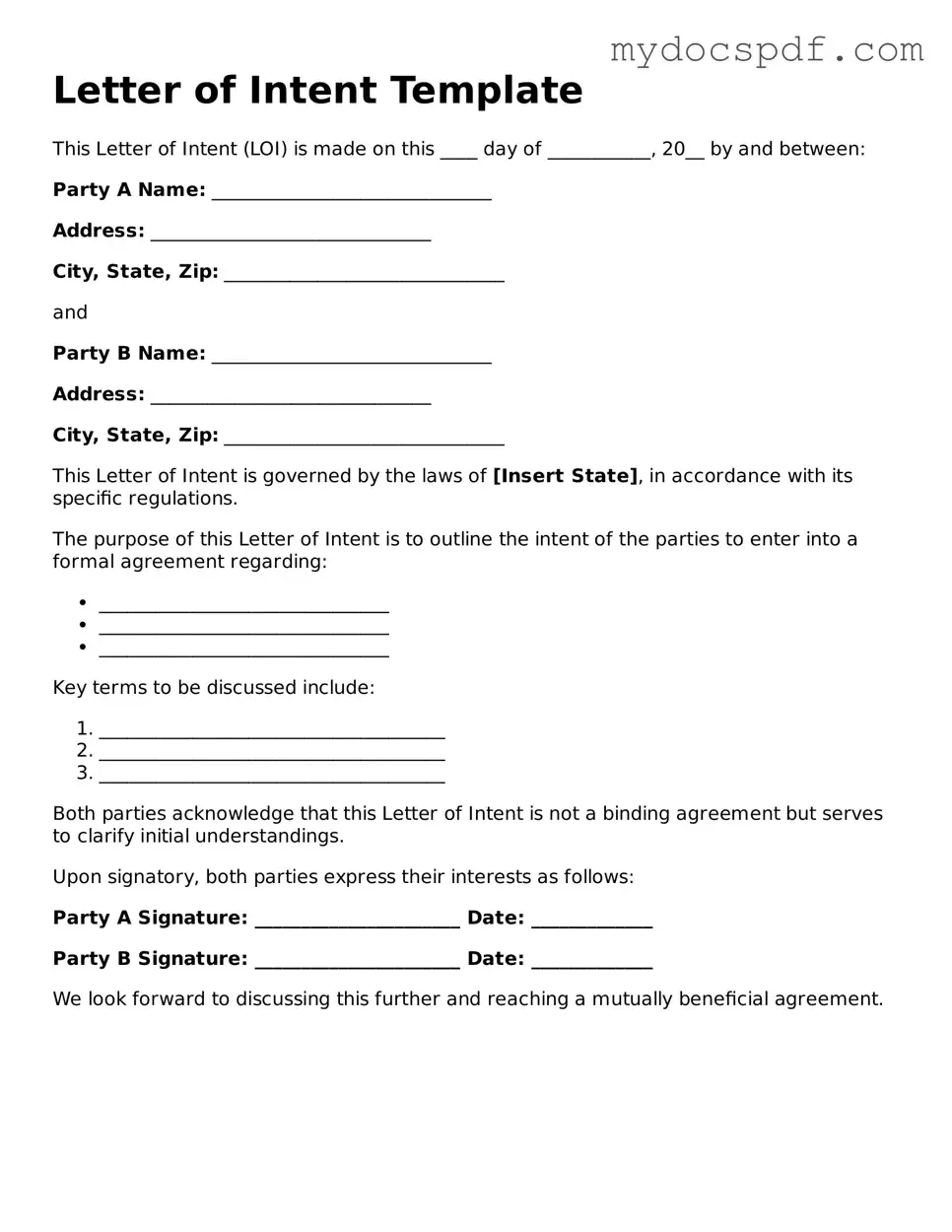Letter of Intent Template
This Letter of Intent (LOI) is made on this ____ day of ___________, 20__ by and between:
Party A Name: ______________________________
Address: ______________________________
City, State, Zip: ______________________________
and
Party B Name: ______________________________
Address: ______________________________
City, State, Zip: ______________________________
This Letter of Intent is governed by the laws of [Insert State], in accordance with its specific regulations.
The purpose of this Letter of Intent is to outline the intent of the parties to enter into a formal agreement regarding:
- _______________________________
- _______________________________
- _______________________________
Key terms to be discussed include:
- _____________________________________
- _____________________________________
- _____________________________________
Both parties acknowledge that this Letter of Intent is not a binding agreement but serves to clarify initial understandings.
Upon signatory, both parties express their interests as follows:
Party A Signature: ______________________ Date: _____________
Party B Signature: ______________________ Date: _____________
We look forward to discussing this further and reaching a mutually beneficial agreement.
